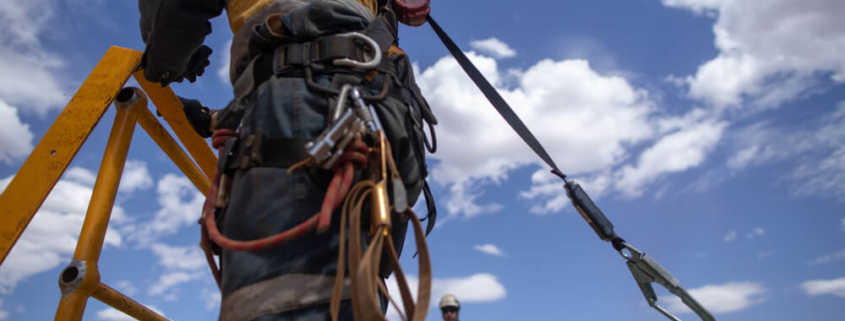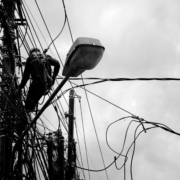OSHA Standards for Fall Protection
The Occupational Safety and Health Administration (OSHA) regulates many areas of the workplace because of the various hazards that exist, threatening the health and safety of workers and innocent bystanders. One area that receives strict regulation by the agency is fall protection. OSHA requires employers, contractors, subcontractors, and premises owners to adhere to specific safety measures at various heights depending on the industry and circumstances.
Why Fall Protection is Heavily Regulated by OSHA
After traffic crashes, falls are the leading cause of unintentional deaths worldwide, resulting in roughly 684,000 lost lives annually. In the U.S. alone, falls are number one among OSHA’s “Fatal Four” leading causes of fatalities in the workplace, accounting for roughly 36% of workplace deaths each year.
Even though workplace accidents and deaths have declined over the years, workers are still injured or lose their lives due to serious hazards. Fall accidents take place due to unprotected holes or sides, improperly constructed surfaces, and workers who have fallen off of scaffoldings, ladders, roofs, and other heights. OSHA fall protection requirements would safeguard against many of these accidents.
OSHA Standards for Fall Protection
OSHA has established general fall safety standards that apply to all industries and employers. The industry has also created a separate set of standards that apply to the construction and maritime industries. The rules are incredibly specific. The general requirements for fall safety include:
- Railings must be placed around ladder ways and stairways.
- Chute openings or hatchways must either be sealed by a hinged cover or have a removable railing system.
- Working platforms must have proper fall safety protection measures and be safely accessible.
- If a fall arrest system is used, it must be installed by qualified personnel and only used by employees who have been properly trained in its use.
- Staging must meet OSHA guidelines.
- Safety nets must meet OSHA guidelines.
What is Considered a “Height” According to OSHA?
The definition of a height by OSHA varies according to your industry. In a general workplace industry, fall safety standards must be in place for heights over 4 feet. In maritime industries, they must be in place for heights over 5 feet. And, in construction industries, there is a “6-foot rule.”
What is a Personal Fall Arrest System (PFAS)?
A Personal Fall Arrest System (PFAS) refers to a system used to stop (arrest) an employee’s fall from a working or walking surface. It consists of a body harness, anchor, and connector. Anchors can be temporary or permanent, but temporary anchors should only be used in areas where workers don’t travel often. Other rules for anchors include:
- Anchors should be capable of supporting at least 5,000 lbs. per employee attached or be designed, used, and installed according to OSHA regulations;
- Anchors must be independent of any systems used to support platforms; and
- Anchors must be used under the supervision and direction of a qualified person.
OSHA rules that apply to connectors and PFAS system include:
- Connectors must be made of pressed, formed, or drop forged steel or materials of equivalent strength;
- A PFAS system must limit the distance an employee travels to 3.5 feet and bring them to a complete stop;
- A PFAS system should not make contact with the employee’s chin or neck area; and
- A PFAS system must have a limited maximum arresting force on the worker of 1,800 lbs.
Fall Protection in the Construction Industry
It’s not surprising that falls are the leading cause of death in the construction industry. OSHA has developed a specific set of fall protection standards that apply to this industry. OSHA’s Construction Fall Protection Standard 29 CFR 1926 Subpart M provides a list of ways that employers and contractors can protect workers from hazards. Four common areas where construction work is most dangerous include:
- Unprotected edges and sides – When heights are six feet or greater, OSHA asks that employers implement a guardrail system, safety nets, and personal fall arrest systems.
- Holes – Another common hazard, OSHA asks employers to install a cover over the hole, erect a guardrail around it, and/or use a personal fall arrest system.
- Roof work – One of the most common hazards on construction job sites, OSHA recommends using a combination of warning lines, safety monitoring systems, guardrails, safety nets, and personal fall arrest systems.
- Overhand bricklaying and related work – Depending on the circumstances (heights), employers can implement guardrail systems, safety nets, controlled access zones, and personal fall arrest systems.
Learn More About Protecting Yourself from Falls in the Workplace
Whether you work in construction, as a power lineman, or in some other industry, your employer has an obligation to provide a safe workplace that protects you from being injured in a fall. Having appropriate fall protection and training on the use of safety measures is a vital part of workplace preparedness and effective safety management. To learn more about protecting yourself from falls in the workplace, contact OSHA Injury Attorney directly.





Leave a Reply
Want to join the discussion?Feel free to contribute!